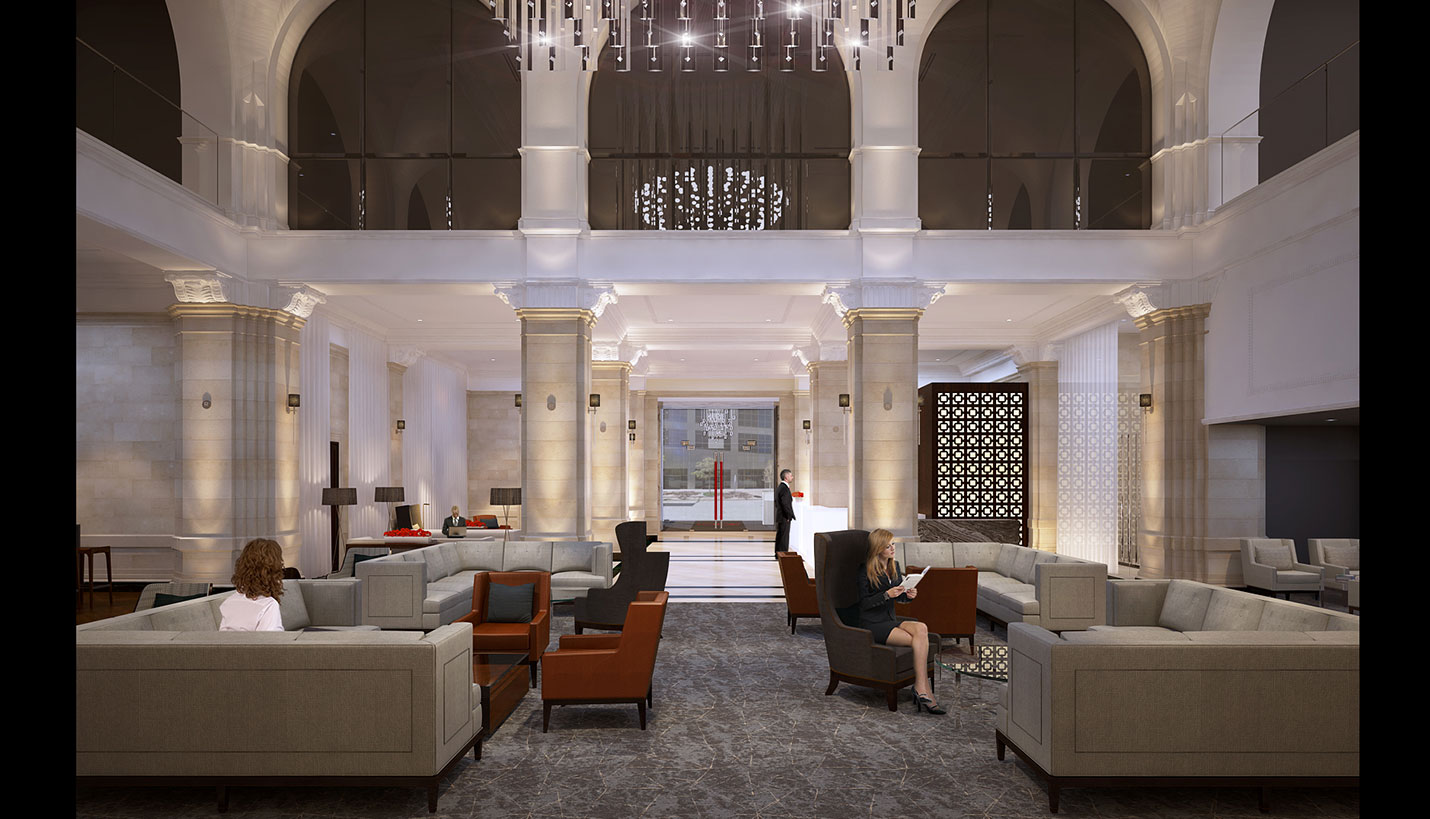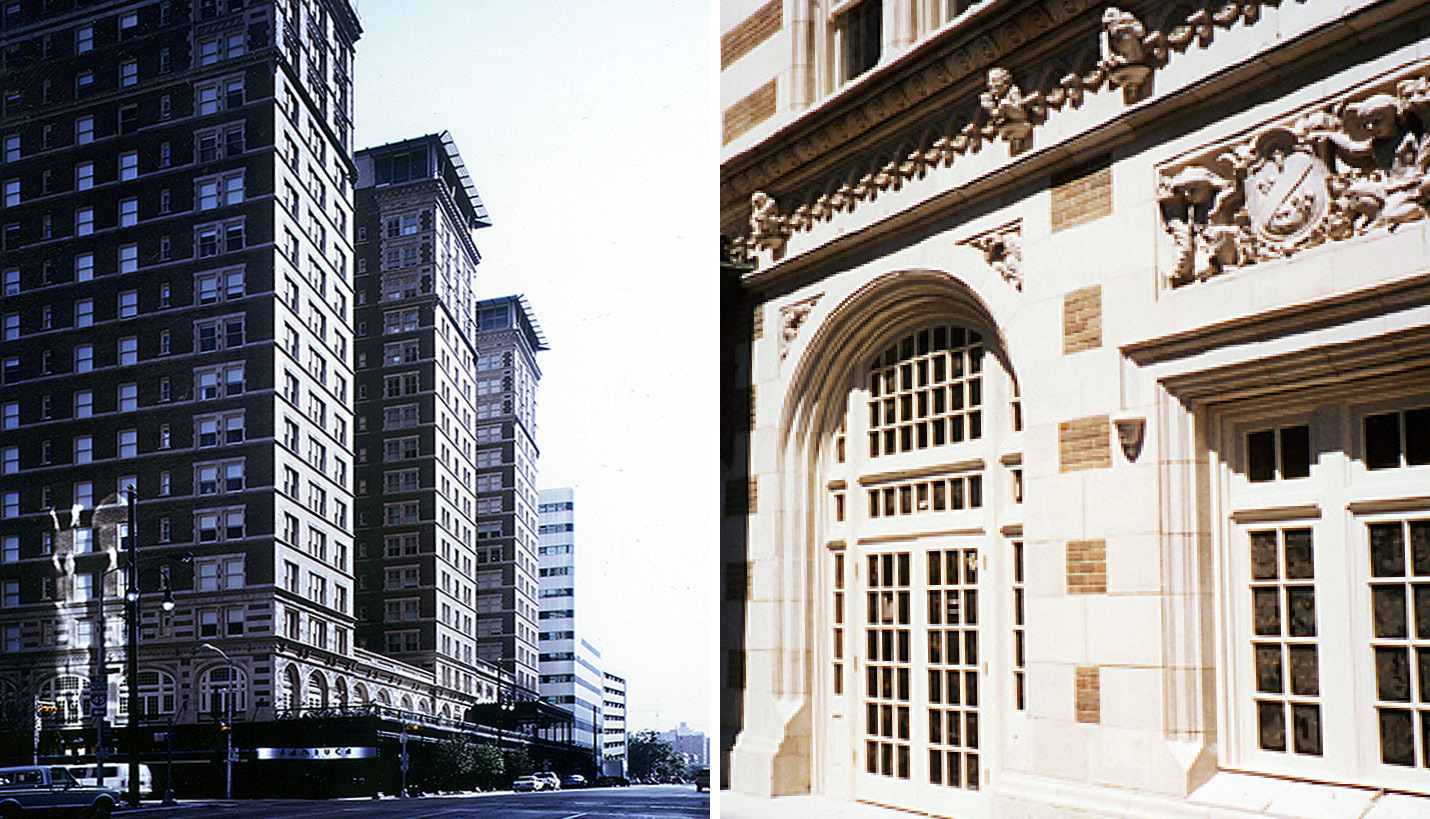Page to Renovate Historic Rice - Again
In the late 1990s, Page was tapped to repurpose the historic but long vacant 1913 landmark Rice Hotel, located on the site of the original Capitol of the Republic of Texas, into residential lofts. This award-winning effort is broadly acknowledged as the project that sparked the revitalization of Houston’s downtown urban core. Even though it is under new ownership today, Page has been selected - again - to give it a more modern look so that it may maintain its competitive edge amid a boom in downtown residential construction.
According to the Houston Chronicle, renderings for the rebranded "The Rice" show a redesigned lobby with sleek furniture in earthy tones beneath a contemporary chandelier glowing in the two-story space. "The entrance and lobby space will be totally re-invented," Clay Hicks, managing director of real estate for property manager Greystar, told the Chronicle. The 308 units will be transformed as well.
Kitchens will get islands, marble countertops, tile backsplashes and stainless steel appliances. Bathrooms will have frameless glass showers, dual marble sinks, tile floors and linen closets. Each unit will ultimately have new paint and light fixtures, and full-size washers and dryers. At The Rice, the lobby and common area renovations are expected to be completed by spring, and interior unit renovations will begin before year-end.
Page, a multidisciplinary architecture and engineering firm, designed the renovations for the owner, Dallas-based Crow Holdings Capital Partners, which acquired the building earlier this year from Post Properties. Marissa Yu, a principal at Page, said the goal of the design project was to make the space feel more modern and bright while respecting the building's historic character. She described the new chandelier, a custom-made Plexiglass piece that will replace a stained-glass element that resembles a skylight, as "a metaphorical representation of what was there before, but interpreted in a new way."
The historic Rice building, originally a 1,000-room hotel, was constructed in 1913 on the site of the former Texas State Capitol before the Legislature moved to Austin. It is listed on the National Register of Historic Places. At 909 Texas, between Main and Travis, the building is well known for being the place President John F. Kennedy spent time the day before he was assassinated in Dallas in 1963. The hotel closed in 1977 and sat vacant until the 1990s when developer Randall Davis and Post Properties, in partnership with the city of Houston, took on the redevelopment of the 18-story building with Page as the architect.
The building's first floor houses restaurants and bars. To view the full article, click here.
10/10/2014
People
Related Posts
- 100 Issues: Urban Design Then & Now
- How to Creatively Repurpose: Gargoyle Edition
- The Rice Re-imagined
- Repositioning Houston's Hottest Multifamily Properties
- Details on former Rice Hotel renovations revealed
- Historic Page-Renovated Downtown Building Up for Sale
- The Wait is Over! - Gatlin's BBQ Opening













